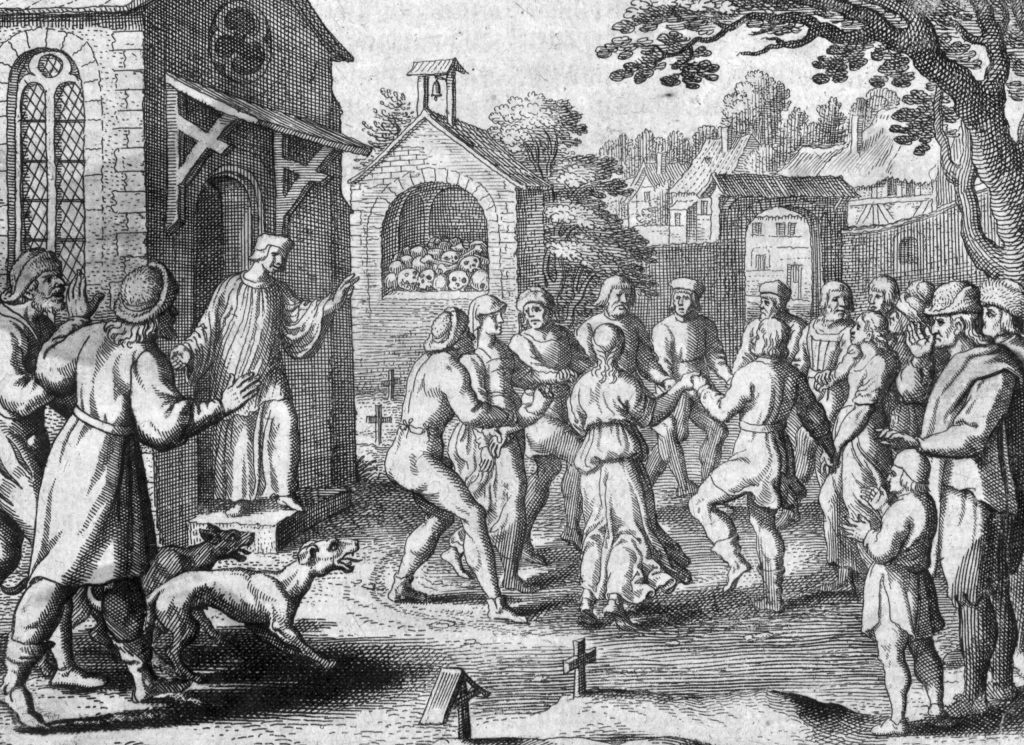As the number of dancers grew, city officials and religious leaders became increasingly alarmed. Initially, they believed that the afflicted were suffering from “hot blood,” a condition thought to be cured by more dancing. To this end, they hired musicians and opened public halls, hoping that a controlled environment would allow the dancers to expel the compulsion. However, this only seemed to worsen the situation, with even more people joining the frenzied movement.
Theories and Explanations
Several theories have been proposed to explain the Dancing Plague of 1518:
- Ergot Poisoning: One prevalent theory is that the dancers were victims of ergot poisoning. Ergot is a type of fungus that grows on rye and other cereals, and it can cause hallucinations, convulsions, and other symptoms when ingested. However, ergotism usually causes violent muscle spasms rather than the rhythmic movements seen in the dancing plague.
- Mass Hysteria: Another theory suggests that the Dancing Plague was a case of mass hysteria or psychogenic illness. This theory posits that the stress and hardships of the time, including famine, disease, and religious fervor, led to a psychological phenomenon where individuals exhibited physical symptoms without a physical cause. The communal nature of medieval life and the high suggestibility of the population could have contributed to the spread of this mass psychogenic illness.
- Psychological and Social Factors: Some historians believe that the dancing was a form of social protest or expression of pent-up frustrations. The early 16th century was a period of significant social and religious upheaval, and the dancing could have been a collective reaction to these stresses.
Aftermath
By September 1518, the Dancing Plague began to subside, partly due to the intervention of authorities who eventually banned public dancing and sent the afflicted to a healing shrine. As mysteriously as it began, the epidemic ended, leaving a legacy of intrigue and speculation.
The Dancing Plague of 1518 remains one of history’s most enigmatic events. It serves as a reminder of the complex interplay between mind, body, and environment, and how social and psychological factors can manifest in extraordinary ways. While modern science has provided potential explanations, the true cause of this strange episode continues to elude definitive understanding, preserving its place as a captivating mystery in the annals of history.
